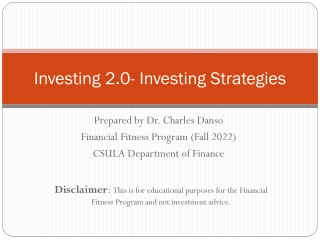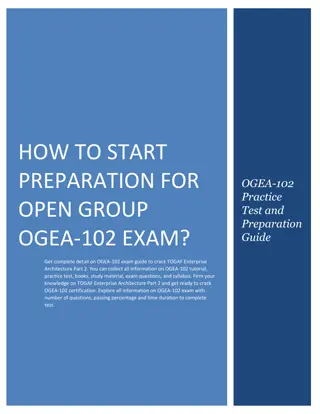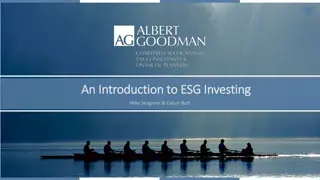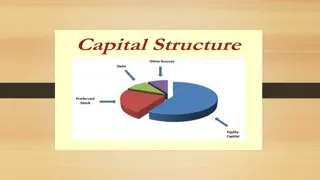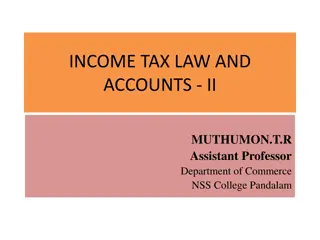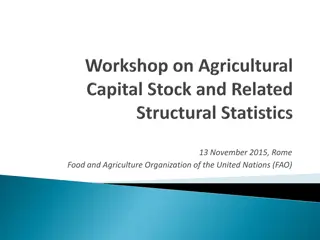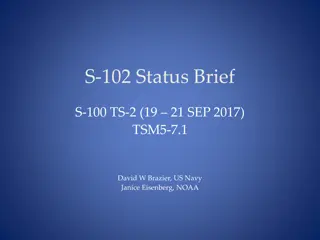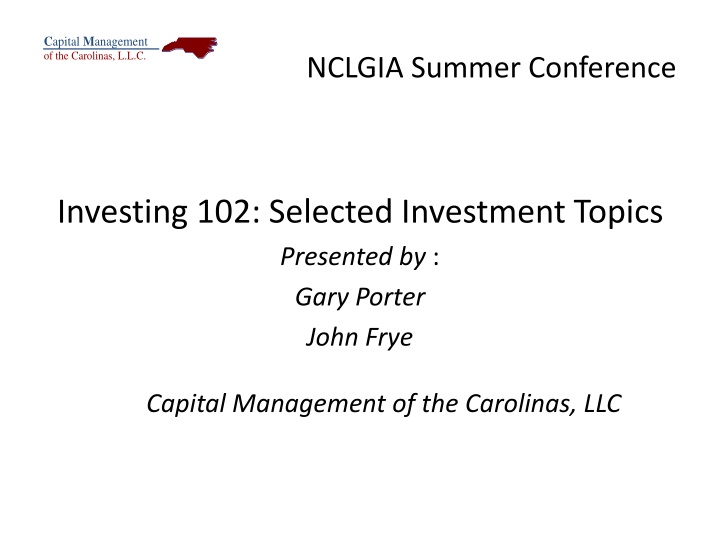
Investing 102: Capital Management of the Carolinas, LLC
In this presentation by Gary Porter and John Frye from Capital Management of the Carolinas, LLC, the main objectives of an investment program are discussed, focusing on safety, liquidity, and market rate returns. The risks involved in investments, such as call risk, interest rate risk, credit risk, and more, are highlighted. By emphasizing the importance of safekeeping assets and market dislocations, the presentation provides valuable insights into navigating investment challenges effectively.
Download Presentation

Please find below an Image/Link to download the presentation.
The content on the website is provided AS IS for your information and personal use only. It may not be sold, licensed, or shared on other websites without obtaining consent from the author. If you encounter any issues during the download, it is possible that the publisher has removed the file from their server.
You are allowed to download the files provided on this website for personal or commercial use, subject to the condition that they are used lawfully. All files are the property of their respective owners.
The content on the website is provided AS IS for your information and personal use only. It may not be sold, licensed, or shared on other websites without obtaining consent from the author.
E N D
Presentation Transcript
Capital Management of the Carolinas, L.L.C. NCLGIA Summer Conference Investing 102: Selected Investment Topics Presented by : Gary Porter John Frye Capital Management of the Carolinas, LLC
Capital Management of the Carolinas, L.L.C. Investing 102
Capital Management of the Carolinas, L.L.C. Investing 102 What are the main objectives of an investment program? The primary objectives are safety and liquidity of principal, followed by the secondary objective of obtaining a market rate return reasonable under the circumstances. Department of State Treasurer, Policy Manual, Cash and Investments Safety Have the funds available when needed. Liquidity Be able to convert investments to cash quickly if needed, without a loss of principal. Yield Earn a market rate of return over time. Safety, soundness and advisability of a given investment may change with economic conditions; in other words, what was advisable yesterday may not be prudent today.
Capital Management of the Carolinas, L.L.C. Investing 102 Market Dislocations
Capital Management of the Carolinas, L.L.C. Investing 102 FRED Graph Market Dislocation
Capital Management of the Carolinas, L.L.C. Market Volatility FRED Graph
Capital Management of the Carolinas, L.L.C. Investing 102 Call Risk may be called away Interest Rate Risk interest rates change Credit Risk - borrower s failure to repay Liquidity Risk- cannot convert to cash readily Prepayment Risk cashflows come in early (GNMA) Concentration Risk too much in one issuer or asset class Event Risk unexpected decrease in credit quality Custodial Credit Risk deposits or investments not completely protected Special Provisions range bonds Generally, there is a risk / return trade-off
Capital Management of the Carolinas, L.L.C. Safekeeping Assets Investing 102 Local governments in North Carolina are not turning assets over to a trustee for management purposes; they are delivering assets for safekeeping with a legally binding trust agreement. The custodian for the unit, not the custodian for the seller of the security, must be the safekeeping agent and hold the securities in the name of and for the benefit of the unit. The strongest internal control measure is to have third-party safekeeping separating the provider of the security from the custodian. In a book-entry transaction, the custodian for the unit must have an account with a Federal Reserve Bank and must be authorized to conduct trust business in NC. The custodial relationship should be evidenced by a written contract between the custodian and the unit of government. Source: LGC Memorandum #2013-03, Sharon Edmundson, 10/29/12
Capital Management of the Carolinas, L.L.C. Investing 102 Benchmarks Used to measure performance of the investment program. Choose an appropriate benchmark for comparison. Benchmarks can be complicated but many simple ones are available. From LGC Sample Policy The cash management portfolio of the [Unit Type] shall be designed with the objective of regularly meeting or exceeding a selected performance benchmark, selected from the average return on the three-month U.S. Treasury bills, The North Carolina Capital Management Trust or the average rate of Fed funds. These indices are considered benchmarks for lower risk investment transactions
Capital Management of the Carolinas, L.L.C. Investing 102 Adjust and Rebalance Portfolio Portfolio is not a static item; changes occur over time Revisions to economic outlook, cash flows and local situations are sometimes necessary (look what happened in 2020) Commercial paper ratings may change, prompting a change in the portfolio
Capital Management of the Carolinas, L.L.C. Investing 102 Recent Headlines Regarding Interest Rate Outlook 10-year Treasury yield tops 3.48%, the highest in 11 years. - CNBC U.S. Treasury yields start the week higher as traders assess rate hikes, recession risk . Reuters 6/27/22 Fed hikes rates by 0.75 percentage point, biggest increase since 1994 - CNBC Fed to lift rates by 75 basis points in July, 50 bps in September - Reuters poll Since the mid-1980 s, the average period of rising rates once the Fed starts raising the FF rate is 35 months. **Remember: When interest rates go up, bond prices go down.**
Capital Management of the Carolinas, L.L.C. Investing 102 Interest Rates Cycles Can Last Extended Periods 27 Years 19 Years 20 Years 41 Years 39 Years 16 14 12 10 8 6 4 2 U.S. Treasury 10 Year Bond Yield, Source: Robert Shiller, Yale University 0 1871 1874 1877 1880 1883 1886 1889 1892 1895 1898 1901 1904 1907 1910 1913 1916 1919 1922 1925 1928 1931 1934 1937 1940 1943 1946 1949 1952 1955 1958 1961 1964 1967 1970 1973 1976 1979 1982 1985 1988 1991 1994 1997 2000 2003 2006 2009 2012 2015 2018 2021
Capital Management of the Carolinas, L.L.C. Investing 102 U.S. Treasury Yield Curve 3.50% 3.00% 2.50% 2.00% 1.50% 1.00% 0.50% 0.00% 3M 6M 1Y 2Y 3Y 5Y 7Y 10Y 9/3/2019 1.98% 1.88% 1.72% 1.47% 1.38% 1.35% 1.42% 1.47% 7/27/2020 0.11% 0.14% 0.14% 0.15% 0.18% 0.30% 0.46% 0.62% 6/11/2021 0.03% 0.04% 0.05% 0.16% 0.31% 0.76% 1.16% 1.47% 7/15/2022 2.29% 2.84% 3.10% 3.12% 3.14% 3.04% 3.02% 2.93%
Capital Management of the Carolinas, L.L.C. Investing 102
Capital Management of the Carolinas, L.L.C. Investment Accounting Accounting for Investing Activities
Capital Management of the Carolinas, L.L.C. Investment Accounting Guiding Principals Investments must be reported at Fair Value What is Fair Value? The price that would be received to sell an investment in an orderly transaction between market participants at the measurement date It is an exit price or simulates liquidating your portfolio For financial statements and budget, it is just as if you sold your portfolio June 30 and repurchased it July 1 Fair Value vs. Market Value; Fair Value does not depend upon an active secondary market Investment income should be recorded in the proper periods
Capital Management of the Carolinas, L.L.C. Investment Accounting Why Fair Value ? The Board (GASB) also believes fair value is the more relevant and faithful representation of the asset and more accurately reports the resources available to provide services because it portrays the market's estimate of the net future cash flows of investments, discounted to reflect both time value and risk. The value of investments comes from an entity's ability to generate income and to convert those investments to cash, and to use the resulting cash to support its activities. Source: Statement No. 31 of the Governmental Accounting Standards Board
Capital Management of the Carolinas, L.L.C. Investment Accounting Guiding Principles How do we apply these? Investments must be reported at fair value Exception for depository accounts Exception for other short-term money market instruments and pools Investments are initially accounted for at cost Market is the best indicator of fair value when investment is purchased Investment income should be recorded in the proper periods How should accrued interest paid at the purchase date be handled? How should investment income be recorded over the life of the security? What about premiums or discounts?
Capital Management of the Carolinas, L.L.C. Investment Accounting Gathering Data from a Confirmation Ticket Things you should identify for accounting purposes CUSIP identifying number unique to issue (Committee on Uniform Security Identification Procedures) Instrument purchased issuer, structure and amount purchased Principal paid includes any premium or discount Accrued interest paid if any Total cash outlay for the investment Coupon Yield rate you will be paid on the investment s par value Key Dates settlement date, maturity date, issue date, and call provisions
Capital Management of the Carolinas, L.L.C. Discount $6,480
Capital Management of the Carolinas, L.L.C. Investment Accounting Gathering Data from a Confirmation Ticket Things you should identify for accounting purposes CUSIP 912828RT9 Instrument purchased $2MM US Treasury Note Principal paid $1,993,520.00 Discount $6,480.00 Accrued interest paid $2,190.93 Days of accrued interest 29 Total cash outlay for the investment $1,995,710.93 Coupon received on par value 1 3/8 or 1.375% Key Dates Settlement date Maturity date Issue date 12/29/17 11/30/18 11/30/11
Capital Management of the Carolinas, L.L.C. Investment Accounting Investment must initially be recorded at cost Record a journal entry to reflect the investment purchase Debit: Investments Debit: Accrued Interest on Investments (if applicable) Credit: Cash Investment income should be recorded in the proper periods Calculate monthly interest accrual for the term of the investment Prepare journal entries to accrue interest income each month Debit: Accrued Interest on Investments Credit: Investment Income Record interest payments when received Debit: Cash Credit: Accrued Interest on Investments/Investment Income (if not all accrued)
Capital Management of the Carolinas, L.L.C. Investment Accounting Accounting for discounts and premiums paid Discounts from par value must be accreted over the remaining life of the security. This gradually increases the cost basis of the investment towards its par value over the life of the investment. Debit: Investments Credit: Investment Income Premiums paid above par value must be amortized over the remaining life of the security. This gradually decreases the cost basis of the investment towards its par value over the life of the investment. Debit: Investment income Credit: Investments If this is not done, the entire premium or discount will be recorded as a decrease or increase in investment income at the maturity date and distort the income reported by period.
Capital Management of the Carolinas, L.L.C. Investment Accounting Recording investment maturity Prepare a journal entry to reflect the maturity of the investment Must reconcile accrued interest with actual interest earned Avoid double booking accrued interest in the month of maturity/call Basic journal entry Debit: Cash Credit: Investments Credit: Accrued Interest Credit: Investment Income (for any interest earnings that were not accrued)
Capital Management of the Carolinas, L.L.C. Investment Accounting Example: Investment purchased at Par
Capital Management of the Carolinas, L.L.C. Investment Accounting Example: Investment purchased at Premium Premium $14,040
Capital Management of the Carolinas, L.L.C. Investment Accounting Changes in market interest rates will affect an investments fair value When market interest rates increase, the fair value of all investments held in a portfolio will decrease When market interest rates decrease, the fair value of all investments held in a portfolio will increase In the current rising rate environment, investors who have extended maturities may have significant negative fair value adjustments at June 30, 2022 All fair value adjustments are posted to the investment income account and cannot be recorded as an expenditure
Capital Management of the Carolinas, L.L.C. Investment Accounting Example The 3 YR UST yield on 9/15/2021 was .41% 6/27/2022 was 3.21% *This represents an 783% increase in rates and a $59,474 loss of principal in just about 9 months on a $1,000,000 investment. Fair Value Adjustment Journal Entry Investment Income Investments Debit $59,784 Credit $59,784
Capital Management of the Carolinas, L.L.C. Investment Accounting From the example, the fair value adjustment journal entry would be as follows: Debit: Investment Income Credit: Investments In some instances, the adjustment can wipe out all investment income for the year and result in negative investment income for the fiscal year (we saw this in FY 2018 and will this year) Option to show the detail of investment earnings and fair value adjustment on the face of the statements May report information on realized and unrealized investment losses in the notes to the financial statements but never on the face of the financial statements
Capital Management of the Carolinas, L.L.C. Investment Accounting Why the market adjustment? Isn t the markdown to fair value only a paper loss if the investment is held to maturity? Yes, if held to maturity; markdown would be amortized up until maturity However, fair value is representative of the $59,784 loss that would be realized if the investment were liquidated. Also, fair value is representative of the loss of missed earnings of $59,784 over time at current market rates (opportunity cost of holding the lower yielding investment). This is why the GASB believes Fair Value is a better representation of the value of the investment for financial statement purposes.
Capital Management of the Carolinas, L.L.C. Evaluating Banking Proposals Questions?
Capital Management of the Carolinas, L.L.C. Evaluating Banking Proposals Evaluating Banking Services
Capital Management of the Carolinas, L.L.C. Evaluating Banking Proposals What is an RFP and why have one? 1. Request for Proposal (RFP) - your request that responding banks give a proposal of services to meet your banking needs Services are not required to be bid, but if you do an RFP you will be bound to the terms and the evaluation process. Reasons to have an RFP Policy may require periodic competitive process Something not working well with current bank Changes in technology Changes in cash management practices Banking industry competitiveness; price creep GFOA Recommended Practice
Capital Management of the Carolinas, L.L.C. Evaluating Banking Proposals 2. Bank Compensation how will your bank be paid? Charges & Fees Direct expense Direct control of cost You invest excess cash Potential budgetary item Generally better to maintain low balance and invest excess funds when interest rates are higher Compensating Balances Maintain balances to pay bank charges Hidden costs low earnings rate, carry-over Easier from a budgetary standpoint; non-budget item Use external benchmark for interest calculation (T-bill) Generally is the better choice when interest rates are low
Capital Management of the Carolinas, L.L.C. Evaluating Banking Proposals The Government Finance Officers Association (GFOA) generally recommends that governments use a direct fees approach or a blended approach. Compensating-balance arrangements can offer convenience and seemingly low costs. However compensating banks through fees or a combination of fees and balances is generally financially advantageous. Source: Banking Services: A Guide for Governments, Nicholas Greifer, Editor, GFOA
Capital Management of the Carolinas, L.L.C. Evaluating Banking Proposals Account Analysis an invoice for services Lists volume of all services used Lists per item cost of each services used Calculates and list all fees for service Calculates any earnings credit allowance Calculates compensating balance required Totals all charges and computes any excess/deficit
Capital Management of the Carolinas, L.L.C. Evaluating Banking Proposals Key Account Analysis Terminology Average Daily Balance (Ledger) average amount of cash on hand each day per the bank s books Average Float funds in transit in the banking system, either checks or deposits Average Collected Balance equals average daily balance, less average float Reserve Requirement the Federal Reserve requires a percentage of all deposits be held in reserve (generally 10%) Average Investable Balance average daily balance less float and reserves Earnings Credit Rate the interest rate the bank pays on the investable balance that may be used to pay for banking services Earnings Credit Allowance the implied income that would have been generated if the investable balance had been invested at the earnings credit rate that is available to pay for services under the compensating balance method
Capital Management of the Carolinas, L.L.C. Evaluating Banking Proposals Other Account Analysis Terminology FDIC Charge Generally around 13 basis points (.13%); may be called a Deposit Assessment Fee or Recoupment Fee; will not be called FDIC Charge Carryover of Earnings Ask your bank to carryover any monthly excess earnings, if not, you need to manage balances to maintain as close to breakeven as possible. If they don t allow carryover, those excess earnings are lost the next month. With direct fees you do not have to worry about carryover. Negotiate a longer review period (3-6-12 months). Hard Charges A charge that cannot be offset by any earnings allowance the account may earn
Capital Management of the Carolinas, L.L.C. Evaluating Banking Proposals FDIC Charges Generally 13-15 basis points (.13%-.15%) May be called a Deposit Assessment Fee or Account Usage Fee; will not be called FDIC Charge Fee is charged on entire Average Daily Balance Erodes Earnings Credit significantly If ECR is 30bps and FDIC fee is 15bps = 50% reduction in ECR
Capital Management of the Carolinas, L.L.C. Banking Costs Earnings Credit Rate ECR should go up as interest rates go up Overnight investment rates have increased significantly this year Request indexing to a benchmark; i.e. Fed Funds minus X Carryover of Earnings Request carryover of any monthly excess earnings, or Manage balances to maintain a breakeven position Treasury Management good practices always: Maximize the speed that you collect revenues Pay expenses no earlier than necessary Review account analysis for unnecessary charges or unused line items
Capital Management of the Carolinas, L.L.C. Evaluating Banking Proposals Fee Basis Paying for fees with cash, maintain low account balances; Invest excess cash in higher yielding options; More explicit and transparent. Compensating Balance Method Maintaining a balance that earns interest to pay fees; Earnings credit rate (ECR) is used to calculate the interest earned; Generally less transparent since expenditures are embedded in the contract. Compensating Balance Calculation FDIC excluded from this example Average Daily Balance - Average Float Average Collected Balance - Reserve Requirement (10.00%)* Balance Available for Services x Earnings Credit Rate (ECR) (.30%) Net Monthly Earnings *Previously banks only paid on 90% of balances. Reserve Requirements were temporarily waived in 2020. Also, FDIC charges can be .13% or more, effectively reducing your ECR. 337,257.40 -1,385.33 335,872.07 -0.00 335,872.07 $83.96
Capital Management of the Carolinas, L.L.C. Evaluating Banking Proposals 3. The RFP Process Survey your current banking situation Decide if you need to do an RFP Form a team or committee Prepare RFP document Evaluation/Selection Process/Timeline Pre-proposal conference Receive/analyze RFP s Award banking contract Transition to new bank End relationship with previous bank
Capital Management of the Carolinas, L.L.C. Evaluating Banking Proposals 4. Evaluation of Proposals Received Who will evaluate committee or individual How will the RFP s be evaluated What weights will be assigned to specific parts of the RFP Rigid scoring matrix More flexible overall evaluation Ability to provide all required services Review of references similar size and experience; quality of references Financial stability of respondent Qualifying ratios Current financials www.fdic.gov www.bauerfinancial.com for bank safety ratings www.msci.com/esg-ratings - ESG rating info
Capital Management of the Carolinas, L.L.C. Evaluating Banking Proposals What is an ESG rating? Environmental climate, pollution Social demographic, social, and income Governance management, pensions, fraud Why are they important? Governing boards and the public are increasingly interested in the ESG ratings of major vendors May identify significant ESG risks May indicate the longer-term financial sustainability Where can I find information? MSCI ESG Ratings - www.msci.com/esg-ratings Sustainalytics ESG ratings - https://www.sustainalytics.com/esg-ratings/
Capital Management of the Carolinas, L.L.C. Evaluating Banking Proposals
Capital Management of the Carolinas, L.L.C. Evaluating Banking Proposals
Capital Management of the Carolinas, L.L.C. Evaluating Banking Proposals
Capital Management of the Carolinas, L.L.C. Evaluating Banking Proposals 5. Pre-Proposal Conference Allows the respondents to ask questions about the RFP You may elaborate on items in the RFP May send out responses to questions asked at conference Establish a cut-off date for questions asked by phone (if allowed) Very important part of the RFP process, helps reduce misunderstandings and errors Include departments that use bank services (tax, utilities, etc.) May want to make this required attendance
Capital Management of the Carolinas, L.L.C. Evaluating Banking Proposals 6. Receive/Analyze RFP s Give yourself plenty of time Ask others to help, line up people willing to review RFP s Assign tasks Check for completeness Check for proper form Perform statistical analysis bank credit worthiness, ratio analysis Check references Check for comparability of responses 7. Award Banking Contract After proper review, present recommendation to governing board with proper backup; show acceptable bids in low-cost order
Capital Management of the Carolinas, L.L.C. Evaluating Banking Proposals GFOA-Procurement of Financial Services GFOA recommends that governments: Review their financial services contracts every five years Use a competitive process for the procurement of financial services Obtain market competitive rates and negotiate preferable terms and conditions Take advantage of technology enhancements, service changes, or evolution in the market Reduce the risk of a government becoming too reliant on one vendor

